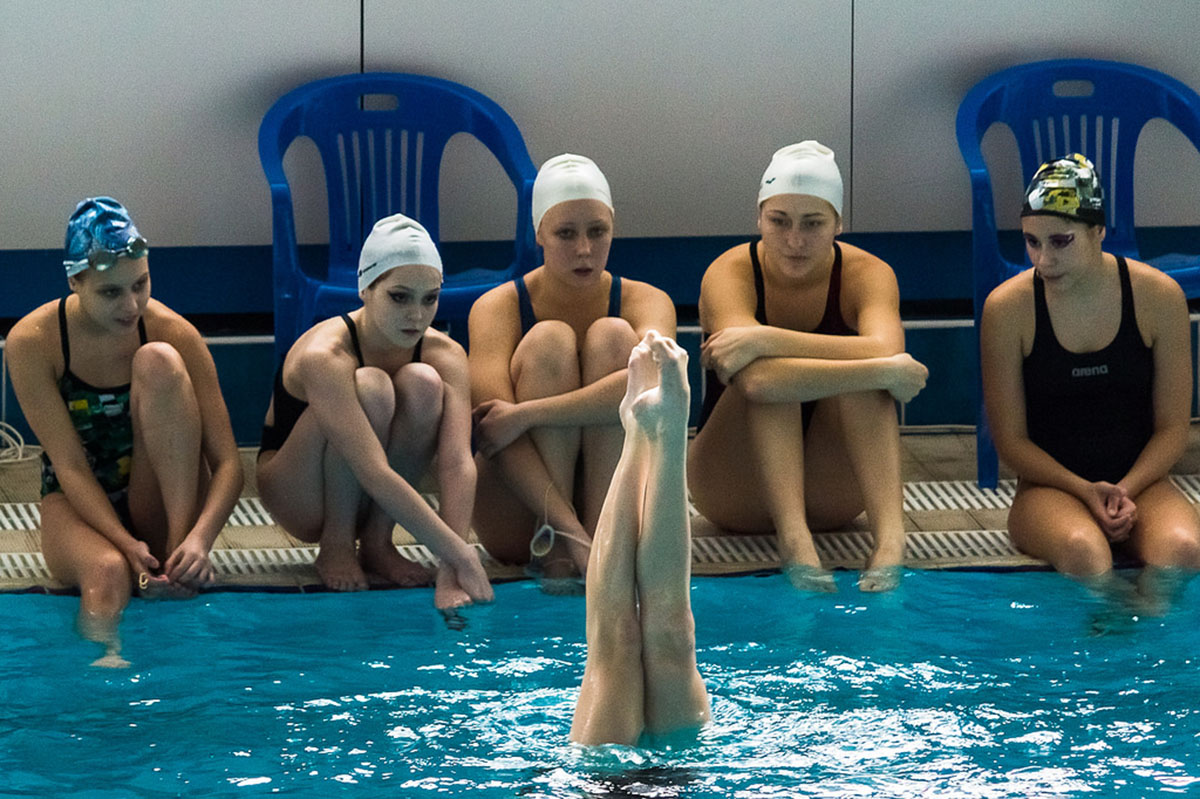Table of Contents
Someone who is looking to get the most out of aquatic exercise can understand that treading should be treated as a warm-up. Swimming laps can also help raise the heart rate and prepare the swimmer for some more challenging water aerobics. Spend roughly five minutes warming up in the water before beginning the regimen.

Body Toning Aquatic Exercises
Jogging in Place (2x1 min)
Bilateral Side Jumps (2x15)
Squat Thrusts (3x15; 3 ft. Water)
Dead Leg Breaststroke (3x45 sec)
Backstroke (2x45 sec)
Butterflies (2x45 sec)
High Knees (2x20 sec; 3 ft. Water)
Butt Kicks (2x20 sec; 3 ft. Water)
Calf Raises (2x30)
Free-Style Swimming (At least 5-10 min)
Additional/Advanced Exercises That Apply To Facility*
Breaststroke Against Current (2x1 min)
Underwater Breaststroke Against Current (2xExhaustion)
Weighted Aquatic Dumbbell Curls (2x15)
Kneeling Aquatic Dumbbell Triceps Extension (2x15)
*If the facility in which you swim at has aquatic specific equipment, such as waterproof dumbbells or weighted wrist and ankle weights, completing the Body Toning Aquatic Exercises with weight is permitted for those healthy, confident and able.
For all exercises that are listed as timed, can also be performed in laps as well. These exercises are roughly designed to apply to all pools, for athletic purposes and leisure. For example, if you swim at your local YMCA or athletic club, the pool may be marked for swim competitions and you can substitute 45 seconds of swimming for five laps in a standard Olympic pool. To achieve the goal of getting toned instead of bulking up and adding girth, keep the repetitions high. You can add additional sets to challenge yourself but less than twelve repetitions will challenge the body’s anaerobic system.
Safety and Helpful Tips
Before engaging in any regimen of pool exercise, consider your health. Typically indoor pools are heated and enclosed in rooms that have temperatures set above the average home or office room temperature in order to keep water warm. If you have no experience in pool activity or moderate bouts of swimming in deeper water, be sure to remain in areas in which you can stand with your head above the surface. Do not add weights until you have been able to complete the exercises alone efficiently. It is also important to consider allergies for those who may be allergic to pool chlorine or other chemicals added to the water.
In addition to safety, remember not to allow yourself to go stale while waiting on results.
Carbohydrates are required to have high energy levels during exercises but can be ample in moderate amounts, and lean muscle will not be achieved if your diet consists mostly of sugary meals (aim for 35-40% carbohydrates in daily diet). The carbohydrates you do consume should come an hour or more before swimming to avoid cramping (just like mother warned you!). Consuming carbohydrates afterward is acceptable but again, in moderation. Supply the body with enough fuel to complete your exercises and get through the day and build strong lean muscle through the duo of diet and exercise.
READ Swimming Is A Great Way To Improve Your General Fitness
Finally, have fun! Be sure to enjoy your unique approach to gaining lean muscle and improving your health. If time permits, participate in a pick-up pool basketball game or swim freestyle for a longer period of time. If a pool is large enough, you could enjoy circular laps of kayaking, another great way to take advantage of aquatic exercise, this time above the surface. Kinesthetic awareness can be improved by inserting a small boogie-board under your feet in the deep end and flex the abdomen while trying to keep your balance on the board. This will improve your ability to have a better understanding of where your lower extremities exist during open-chain exercises.
- Photo courtesy of o.did: www.flickr.com/photos/74076203@N07/14017881714/
- Photo courtesy of mahidoodi: www.flickr.com/photos/mahidoodi/244469033/


Your thoughts on this